Okay, I need to start this with a few disclaimers:
- Although this is a DIY post, I do not actually recommend that anyone do this themselves as a DIY project. I highly recommend that you engage the services of an experienced/professional mechanic to install these headers for you (unless you happen to be a professional mechanic, of course). It is not an easy job; it requires the use of tools that only mechanics usually have handy, it would be VERY difficult without a lift, and it is also quite time consuming, even for a professional. Also, if you get into this halfway and decide that you're in over your head, you're screwed. Depending on how far you are into the process, you might not be able to put the stock headers back on, and then it's tow truck time.
- This is not going to be a step by step guide on how to install these headers. Rather, my intent is to supplement the instructions that Stillen ships with the headers by highlighting some key things to watch out for and be aware of.
- This is not intended to be a discussion thread to discuss driving impressions, dyno results, etc. If that's what you're looking for, there's a separate discussion thread with all that here: Stillen Headers installed - Review/Pics/Vid/Dyno
Installation highlights & pics:
I had a professional mechanic do my install. I helped a little, but really it was mostly him doing the work. The total amount of time it took him was 6 hours. This isn't counting the 3 hours he took to wrap my headers prior to the install. Not sure why it took that long to wrap the headers, but that's how long he says he spent wrapping them.
Wrapping the headers with header wrap is not mandatory. Indeed, I went with the ceramic coated headers, and the ceramic coat provides some thermal insulation. But I decided to go ahead and have them wrapped anyway, just to maximize the heat retention (which maximizes exhaust efficiency). For the header wrap, I went with Thermo-Tec's Gen 2 Copper wrap, which is pre-coated with a copper coating, thus eliminating the need to spray them with high-temp coating after wrapping (which is required when you use a 'normal' wrap).
Here are the headers, all wrapped and ready to go:
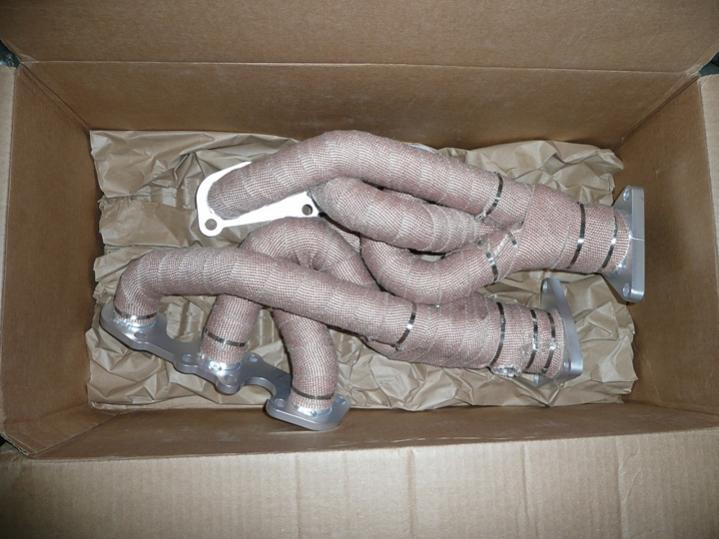
In order to remove the factory headers, you have to remove the heat shields first. Here's the stock header on the passenger side after the heat shield has been removed:
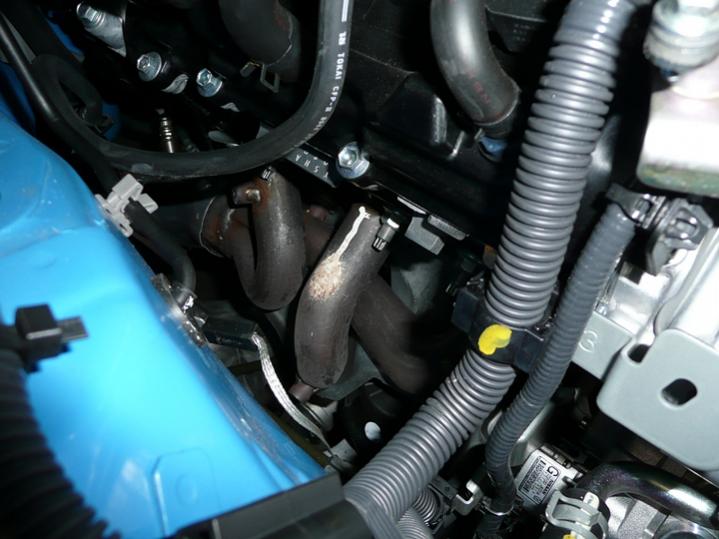
Close-up view showing O2 sensor and connection flange with cat:
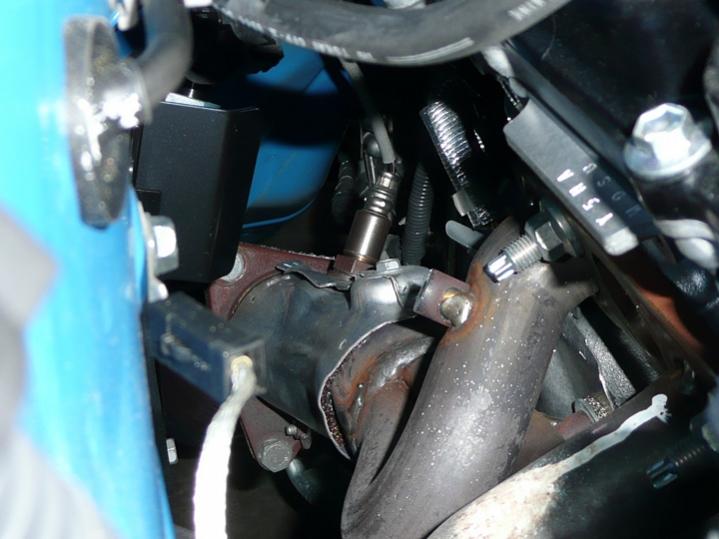
FYI, the passenger side is a lot easier to remove/install, because there are far fewer lines and hoses on the passenger side. So if you try to do the passenger side and find it difficult, stop right there. Don't even attempt the driver's side until you get help, because the passenger side is a piece of cake compared to the driver's side.
Here's the stock header after it was removed. I recommend you leave the O2 sensor attached when you remove the factory header (rather than try to remove the sensor while the factory header is still bolted to the engine). This way, you'll have plenty of room to work with when removing the O2 sensor, which is definitely not what you'll have if you try to get them off while the factory headers are still bolted to the engine. But be careful not to knock/damage the O2 sensor when extracting the factory header. Once you have the entire unit out, spray some penetrating lube into the threads and let it sit for a while. The O2 sensor is in there really tight, and if you try to remove it without loosening it with penetrating lube, you'll be able to move it about an inch and then it'll just bind right up.
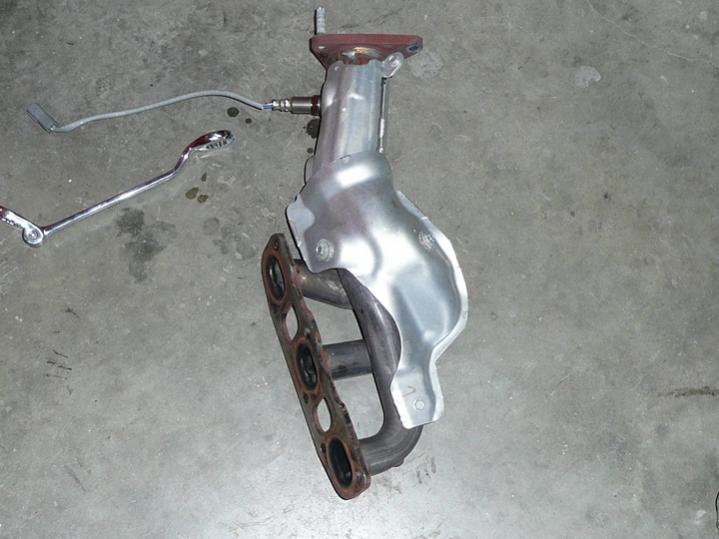
Now, that's not to say that the O2 sensor is easy to get out even after you use penetrating lubricant. It still takes a fair amount of muscle, and as you can see below, the threads partially stripped. (My mechanic was able to easily restore the thread using one of his specialty tools.)
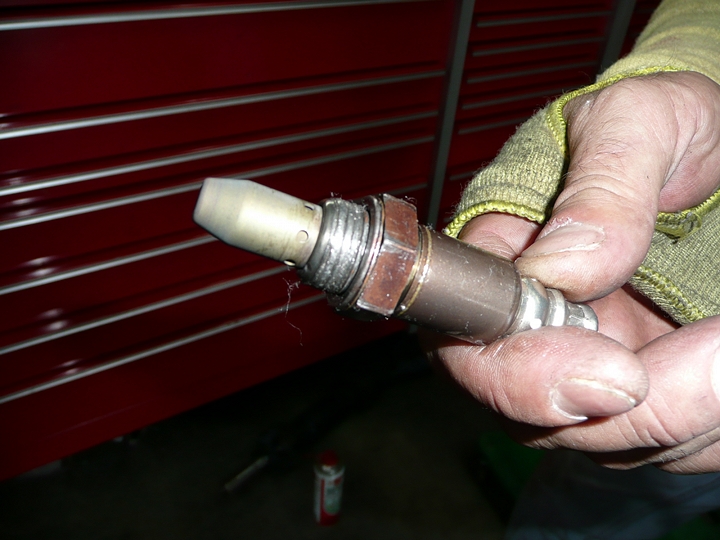
If it still binds even after using penetrating lube, you may need to remove the sensor only partially and spray some more lubricant and let it sit again. In other words, just remove it a bit at a time, stopping and re-spraying each time it binds. Be patient! You could also try applying heat with a blow torch. But
be careful! If you damage the sensors, my understanding is that it's a special order item that takes 4-5 days for a dealer parts dept. to bring in, and they cost something like $400 a piece. This is one of the reasons I recommend you have a professional mechanic do this install, btw.
Installing the new header was straightforward. Bolting the new headers up is a lot easier if you use an air ratchet, btw. The only word of caution here is to make sure you can work by touch. Especially on the driver's side, there are some bolts that you simply can't see. You need to feel for them and work with them without being able to see them.
Here's the passenger side header installed, viewed from the top:
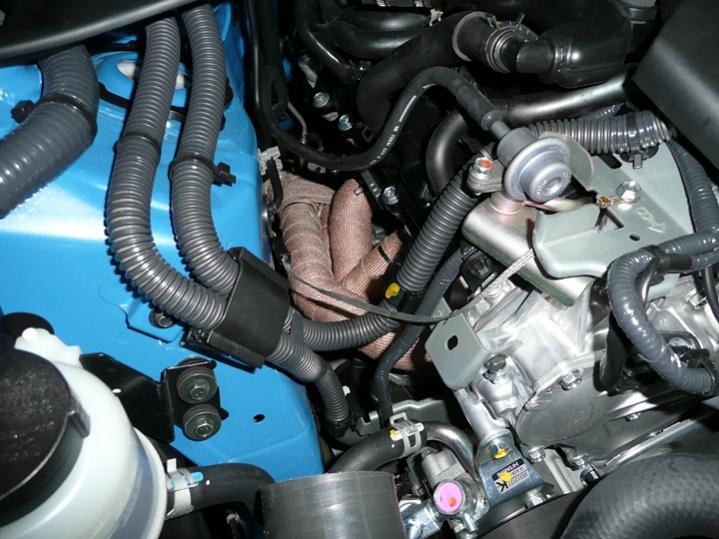
Viewed from the bottom:
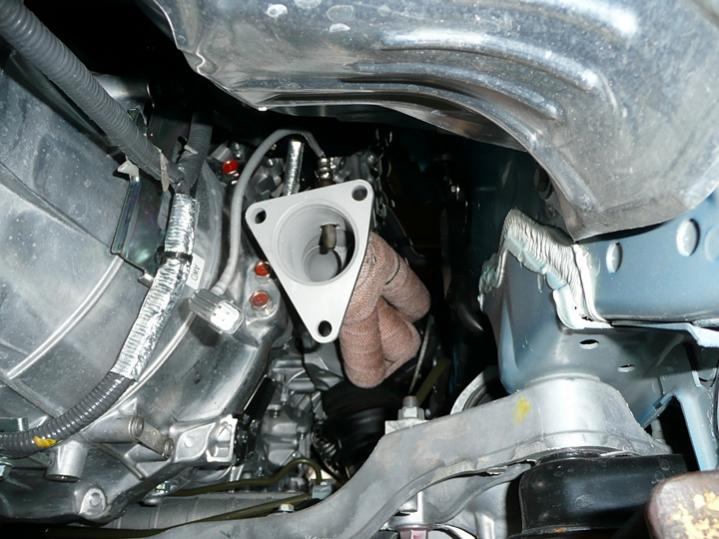
Depending on whether or not you already have aftermarket HFCs or test pipes installed, as well as a cat-back exhaust, you may run into some issues after the header installation is complete. First, the headers are angled slightly lower than stock, which means that things don't all line up properly when it's time to re-attach the cats and the cat-back. Here are some pics to show you what I mean.
The flange of the HFC no longer lines up perfectly with the cat-back:
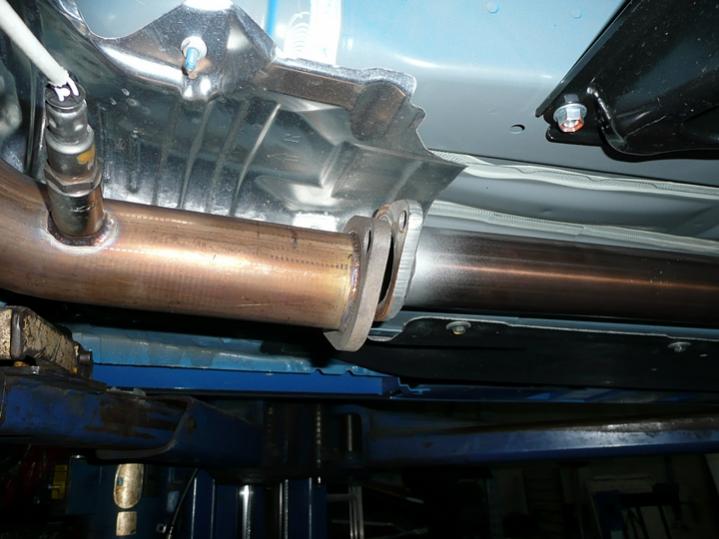
Another view:
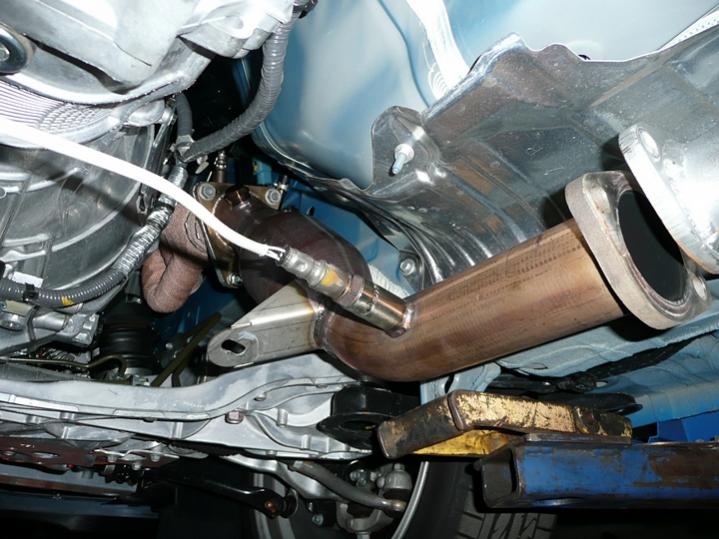
Secondly, if you have HFCs or test pipes, you may find that the bolts that Stillen supplies to connect the header and cat/test pipe flanges are about a quarter inch too short. I have Berk HFCs. Check out how little thread there is once the HFCs were connected to the headers:
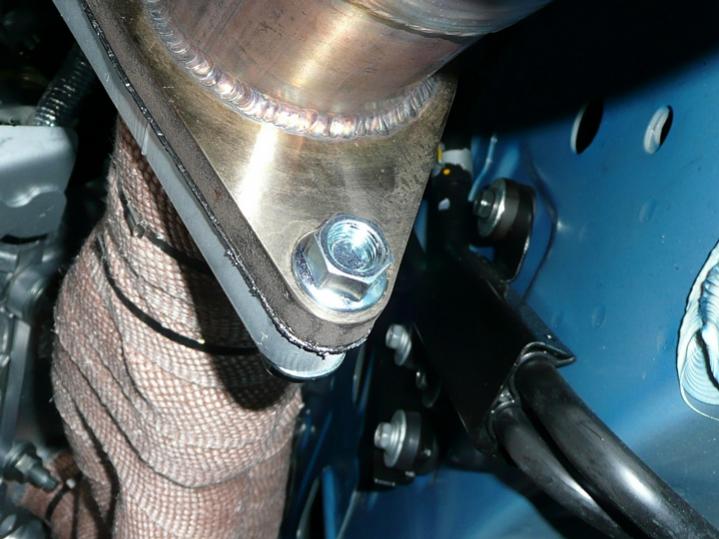
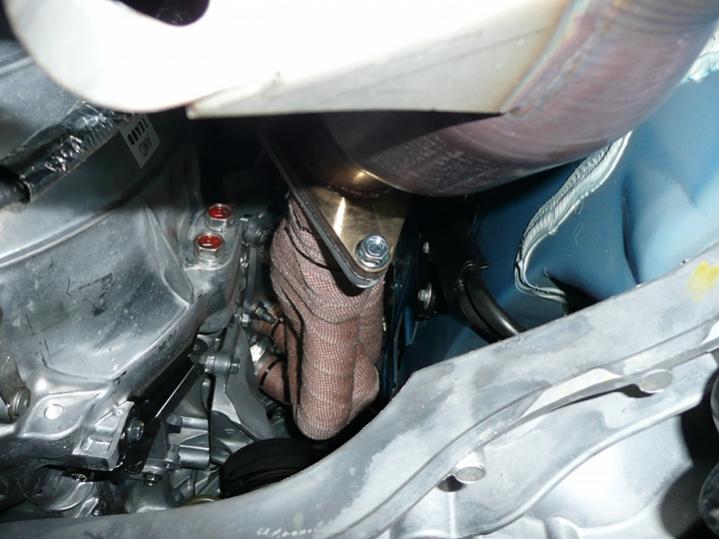
Here is a pic showing a Berk-supplied bolt side by side with a Stillen-supplied bolt:
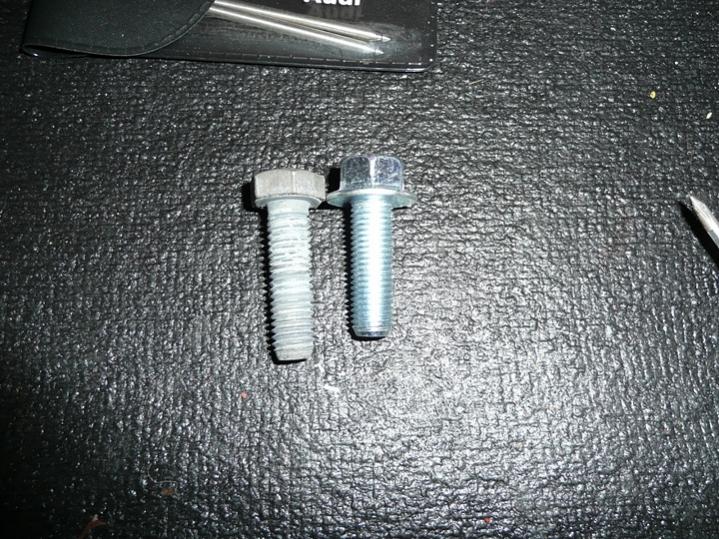
We decided to re-use what Berk bolts we had. The thing is, Berk only supplies 4 bolts instead of 6, because the stock header has a stud attached to it, which means you only need two new bolts per flange (scroll up and look at the pic of the stock header laying on the floor and you'll see what I mean). Well, the Stillen headers aren't set up with a stud attached. It just has 3 holes per flange, which means you need 3 bolts per flange. So we ended up using two Berk bolts per flange, and had no choice but to use one of the shorty Stillen bolts on each flange. I don't know if this is an issue with other brand HFCs or test pipes; it depends on the thickness of the flanges. The root cause of this is that the flanges on the stock cats are thinner than those on the Berks. So to be fair, Stillen is actually supplying the right size bolts because they're anticipating that their headers are going to be connected to stock cats. In other words, it's not so much that Stillen is supplying short bolts, but more the case that Berk is supplying extra long bolts because they know their flange is thicker. The only problem is that they're only supplying four, not six, because Berk is assuming that their HFCs are being hooked up to stock headers, not aftermarket ones.
Note the shiny new Stillen bolt at the bottom, and the older Berk bolt at the top:
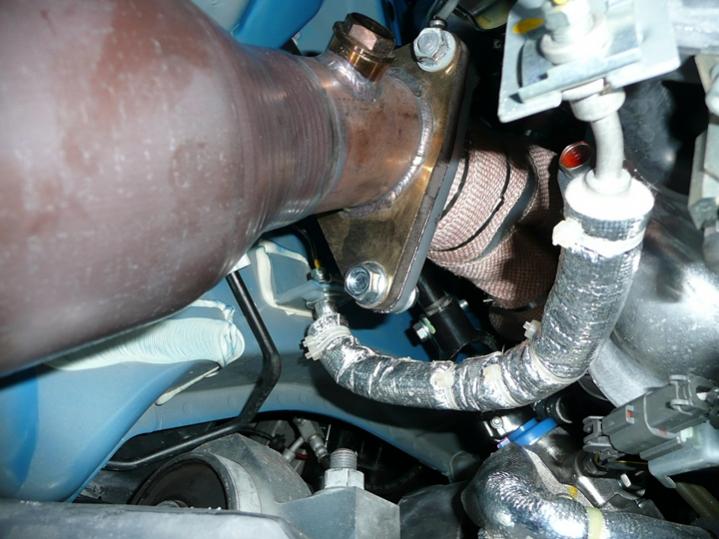
Okay, so back to the issue of connecting the HFCs back up to the cat-back exhaust. As shown above, the angle of the Stillen headers causes the flanges to no longer line up perfectly. What you basically have to do is force them to line up then bolt them together, which is exactly what we did. If you're still running the factory cat-back exhaust, this should be easy because the factory Y-pipe has two flexible sections that will allow relatively easy adjustment. Most aftermarket cat-backs do not have these flexible sections, however, so you have to rely on muscle.
If you have the Stillen cat-back exhaust (as I do), the angle of the headers and resultant need to force the connection between the HFCs and cat-back together exacerbates the problem of the exhaust contacting the cross-member.
This is the cross-member I'm talking about
:
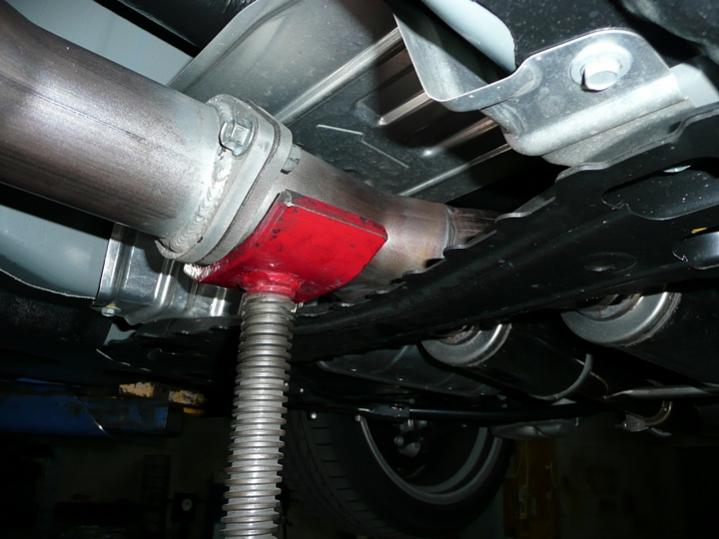
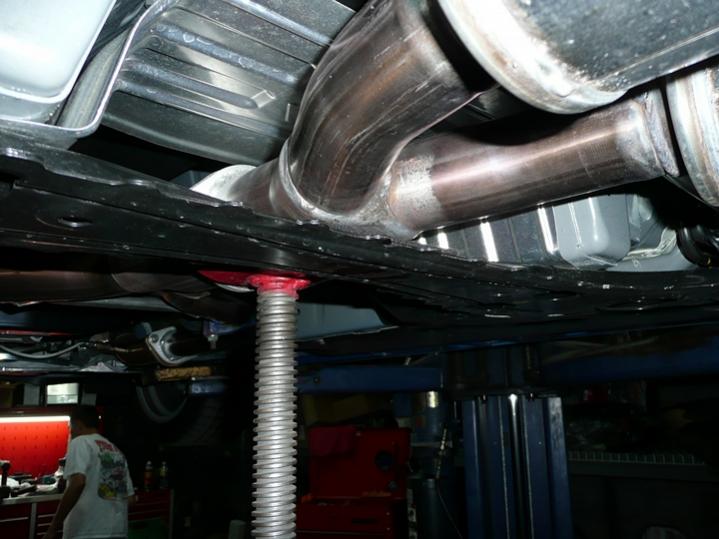
There are different ways to deal with this. But we put hose clamps around the rubber hangers and tightened them to compress the hangers and pull the exhaust off the cross-member:
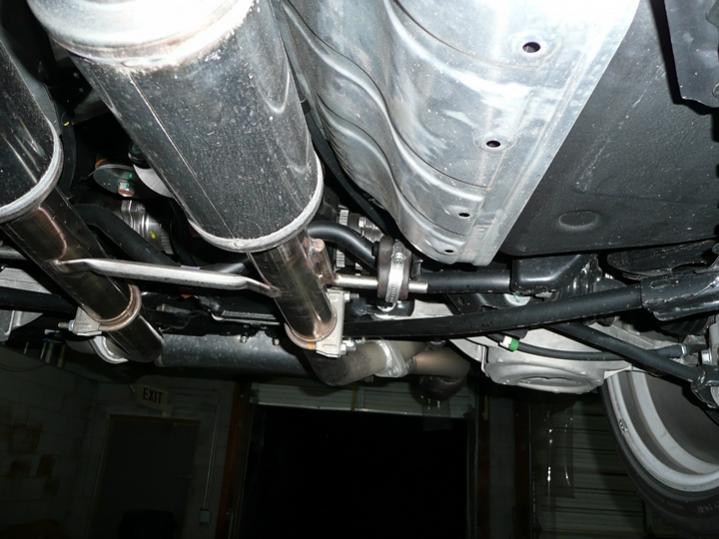
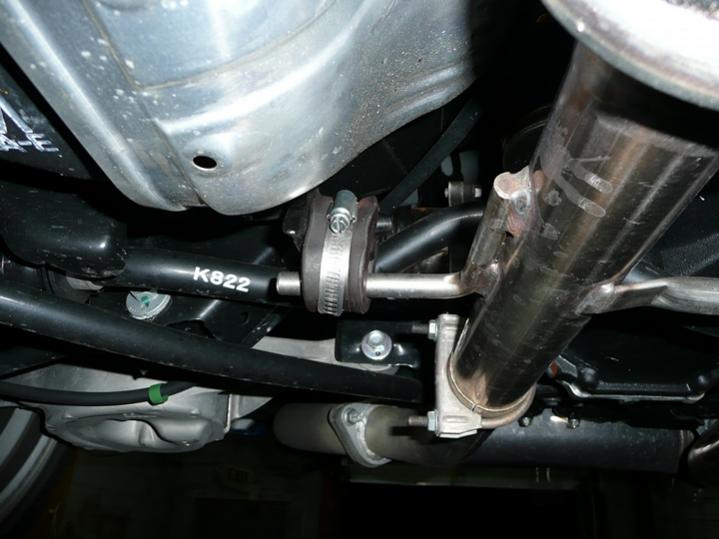
With that, the installation was complete.
I hope you find this helpful. Please feel free to have your mechanic review this if you're preparing to have these headers installed. And don't forget the rep pts if you found this post helpful.
